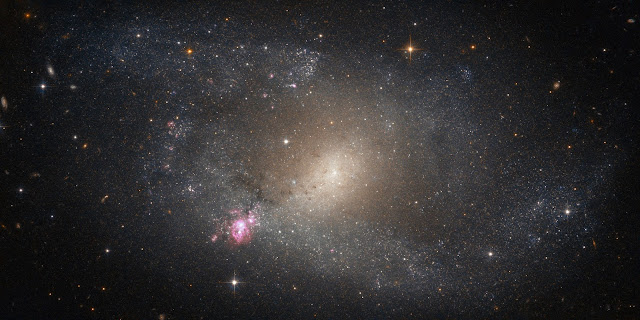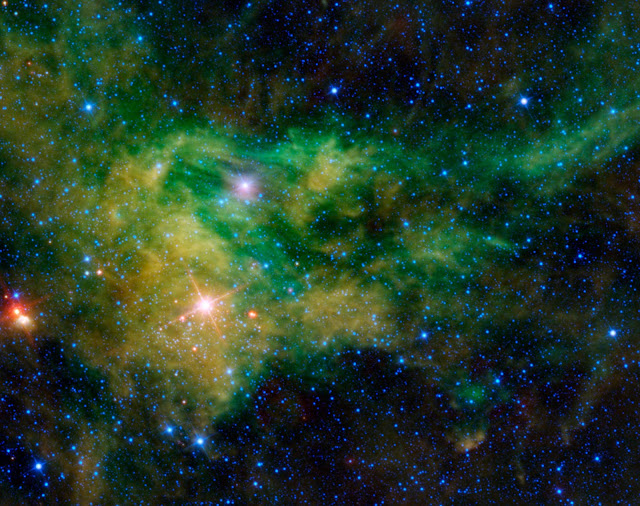Spiral Galaxy NGC 5398
This NASA/ESA Hubble Space Telescope picture shows NGC 5398, a barred spiral galaxy located about 55 million light-years away.
The galaxy is famous for containing an especially extensive HII region, a large cloud composed of ionised hydrogen (or HII, pronounced “H-two”, with H being the chemical symbol for hydrogen and the “II” indicating that the atoms have lost an electron to become ionised). NGC 5398’s cloud is named Tol 89 and sits at the lower left end of the galaxy’s central “bar” of stars, a structure that cuts through the galactic core and funnels material inwards to maintain the star formation occurring there.
Tol 86 is conspicuous in being the only large massive star forming complex in the entire galaxy, with an extension of roughly 5000 times 4000 light-years; it contains at least seven young and massive star clusters. The two brightest clumps within Tol 89, which astronomers have named simply “A” and “B”, appear to have undergone two bursts of star-forming activity — “starbursts” — roughly 4 million and less than 3 million years ago respectively. Tol 89-A is thought to contain a number of particularly bright and massive stars known as Wolf-Rayet stars, which are known for their high temperatures and extreme stellar winds.
Image Credit: ESA/Hubble & NASA
Explanation from: https://www.spacetelescope.org/images/potw1737a/




Comments
Post a Comment